- Joined
- Jun 7, 2013
- Messages
- 10,452
One day a couple of years ago, a friend told me "come down to Sulfur Springs Ave. and look at this stuff", so I went there to see a 14" bandsaw, a 12" wood planer, AND this 9" Monarch lathe. He bought the saw and planer, and despite some misgivings, I bought the lathe for the asking price of $250; it was somewhat rusty, had been stored in a carport, but came with its original overhead countershaft, a motor, and tooling, including collets and 3 and 4 jaw chucks. After getting it home, I disassembled and cleaned up all the parts, and scraped and stoned the ways to remove rust, which it turned out was quite superficial. I also scraped in the carriage to better bearing and reassembled it. The only discernible wear that I found was to the half nut (yes, only one), I repaired it by making a flanged bushing that fit in the bored out original threads and pinned it in on both ends. Why the half nut was so worn is a mystery, because of the absence of wear anywhere else, and the fact that it has power feed on the carriage and cross slide. It had one tooth off the cone back gear, for which I made a gear sleeve and pinned it on with allen serscrews. What attracted me to the lathe was its exceptionally long bed, taking more than 36" length.
After buying it and refurbishing things, I found that a friend in Berkley had one just like it, and had both the large faceplate and steady rest, so I borrowed them and made patterns for both and also for a follow rest and small faceplate (driving or dog plate) and had them cast in iron.
Also pictured is a very nice antique drill press that I was given about the same time period by the F.W.Lindgren Co.; this is a machine built for production work, note the table elevation crank, the 5 step cone pulley, and that it has a ring oiling bearing setup on the lower pulley shaft and the "production" table with coolant recess all around. The table had the usual divots, but was thick enough that I was able to face about 1/8" off and have only a couple of deep ones left that I filled with Plastic Steel; I now have to build a suitable bench to mount it on. The old motor in the pics came with it, it has an adjustable sliding base for tensioning the belt. I did have to make a new bushing for the pulley end and metal spray the journal, which had been worn considerably undersize.
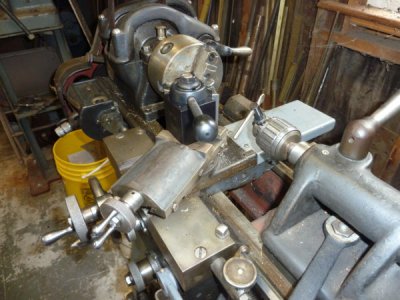
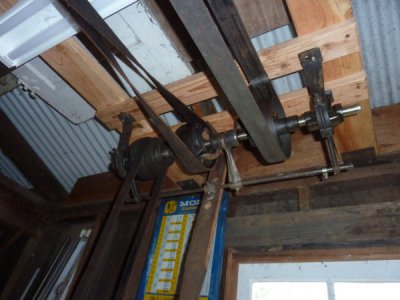
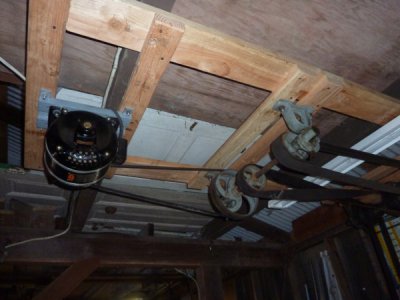
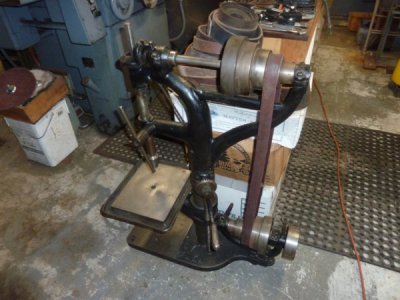
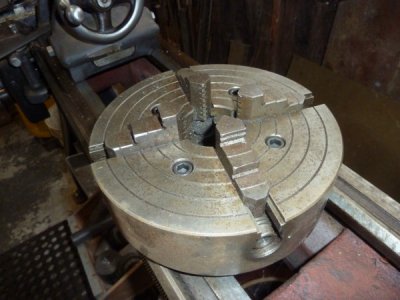
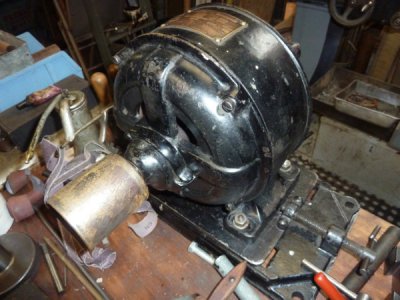
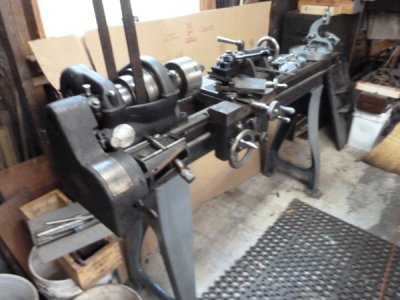
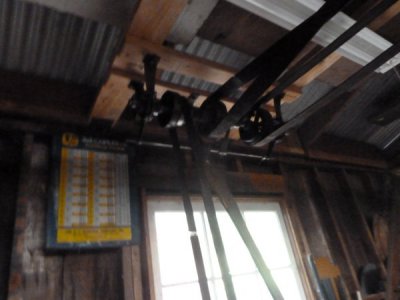
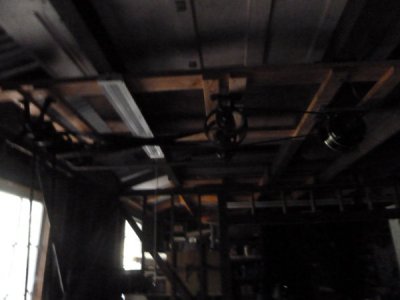
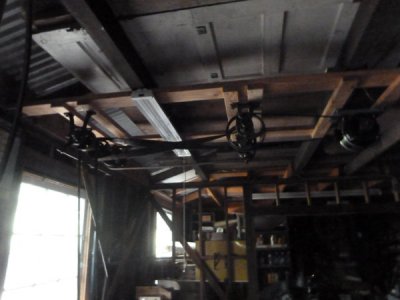
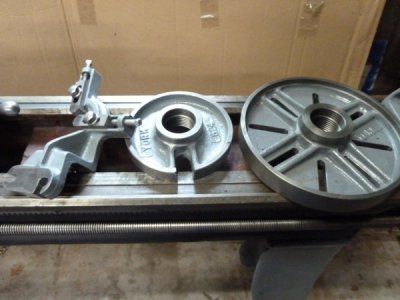
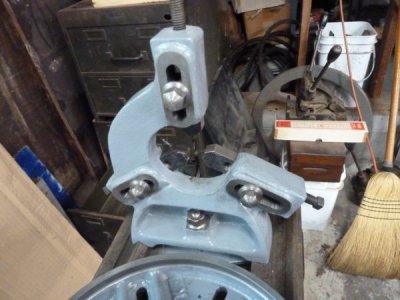
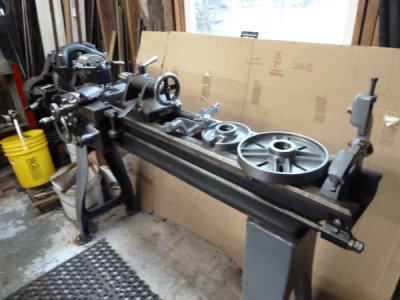
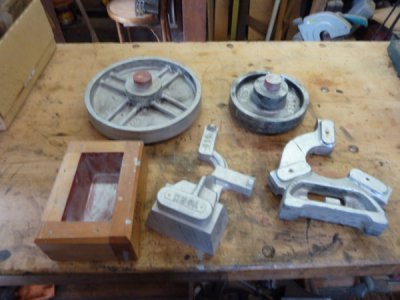
After buying it and refurbishing things, I found that a friend in Berkley had one just like it, and had both the large faceplate and steady rest, so I borrowed them and made patterns for both and also for a follow rest and small faceplate (driving or dog plate) and had them cast in iron.
Also pictured is a very nice antique drill press that I was given about the same time period by the F.W.Lindgren Co.; this is a machine built for production work, note the table elevation crank, the 5 step cone pulley, and that it has a ring oiling bearing setup on the lower pulley shaft and the "production" table with coolant recess all around. The table had the usual divots, but was thick enough that I was able to face about 1/8" off and have only a couple of deep ones left that I filled with Plastic Steel; I now have to build a suitable bench to mount it on. The old motor in the pics came with it, it has an adjustable sliding base for tensioning the belt. I did have to make a new bushing for the pulley end and metal spray the journal, which had been worn considerably undersize.














